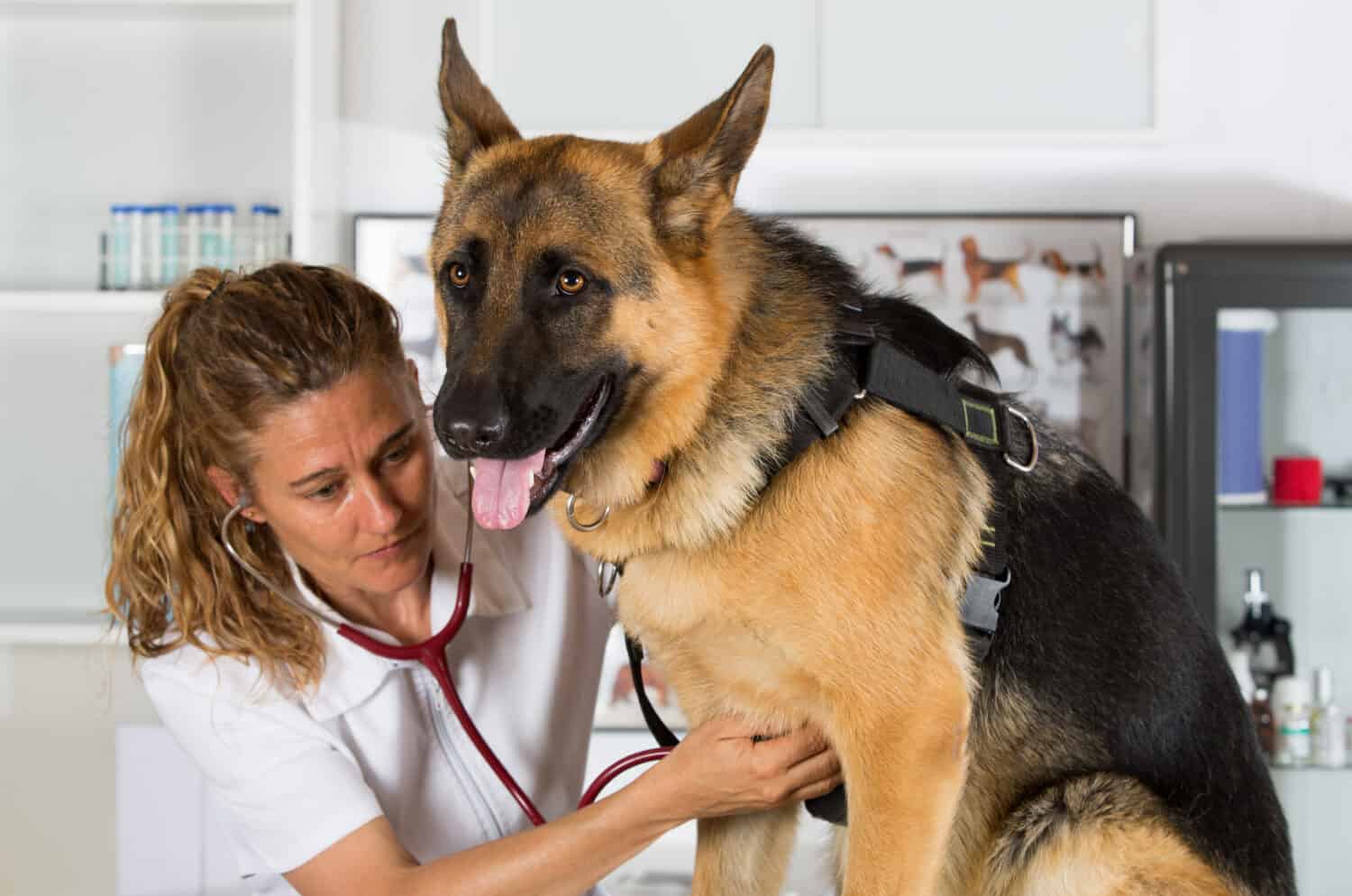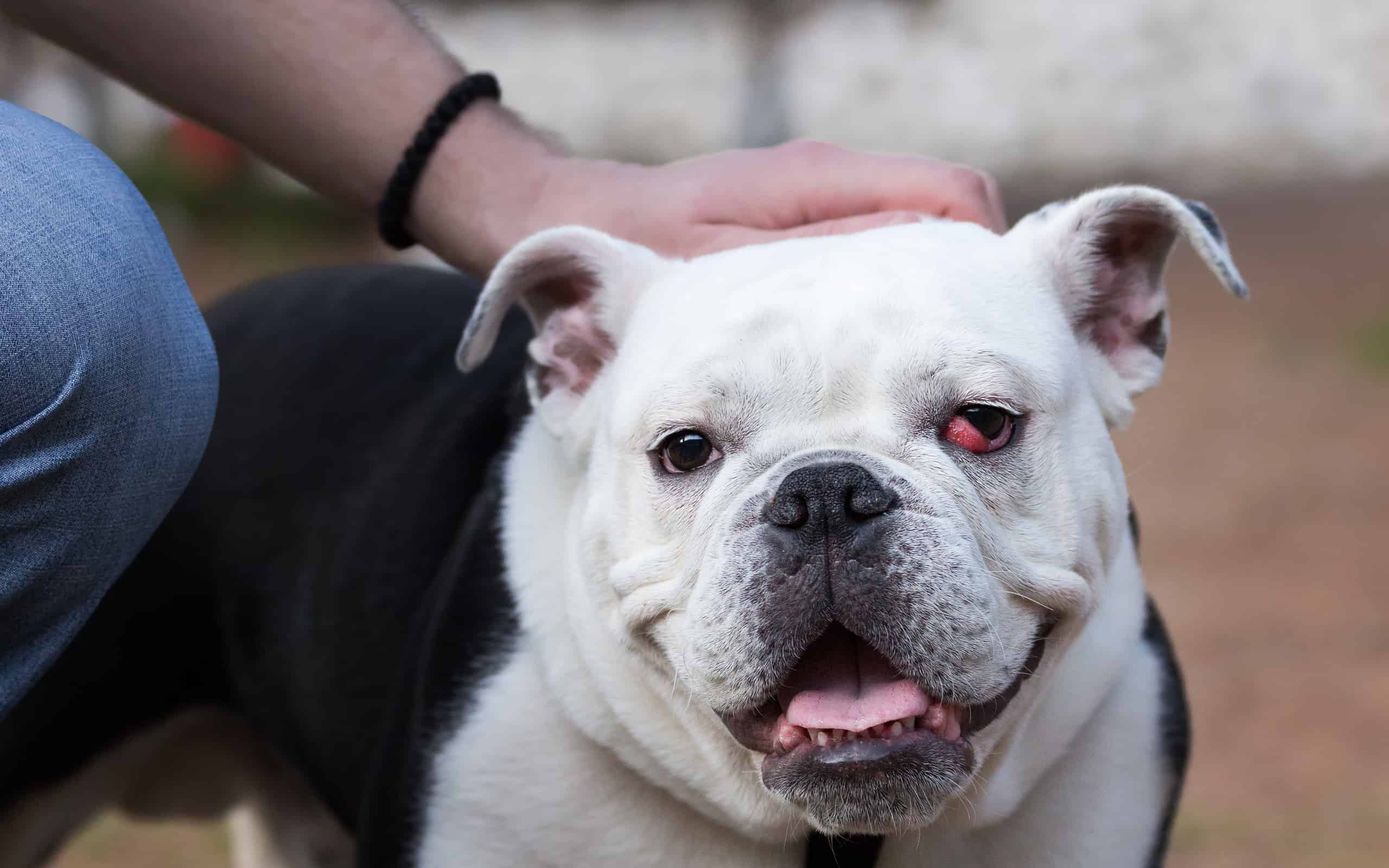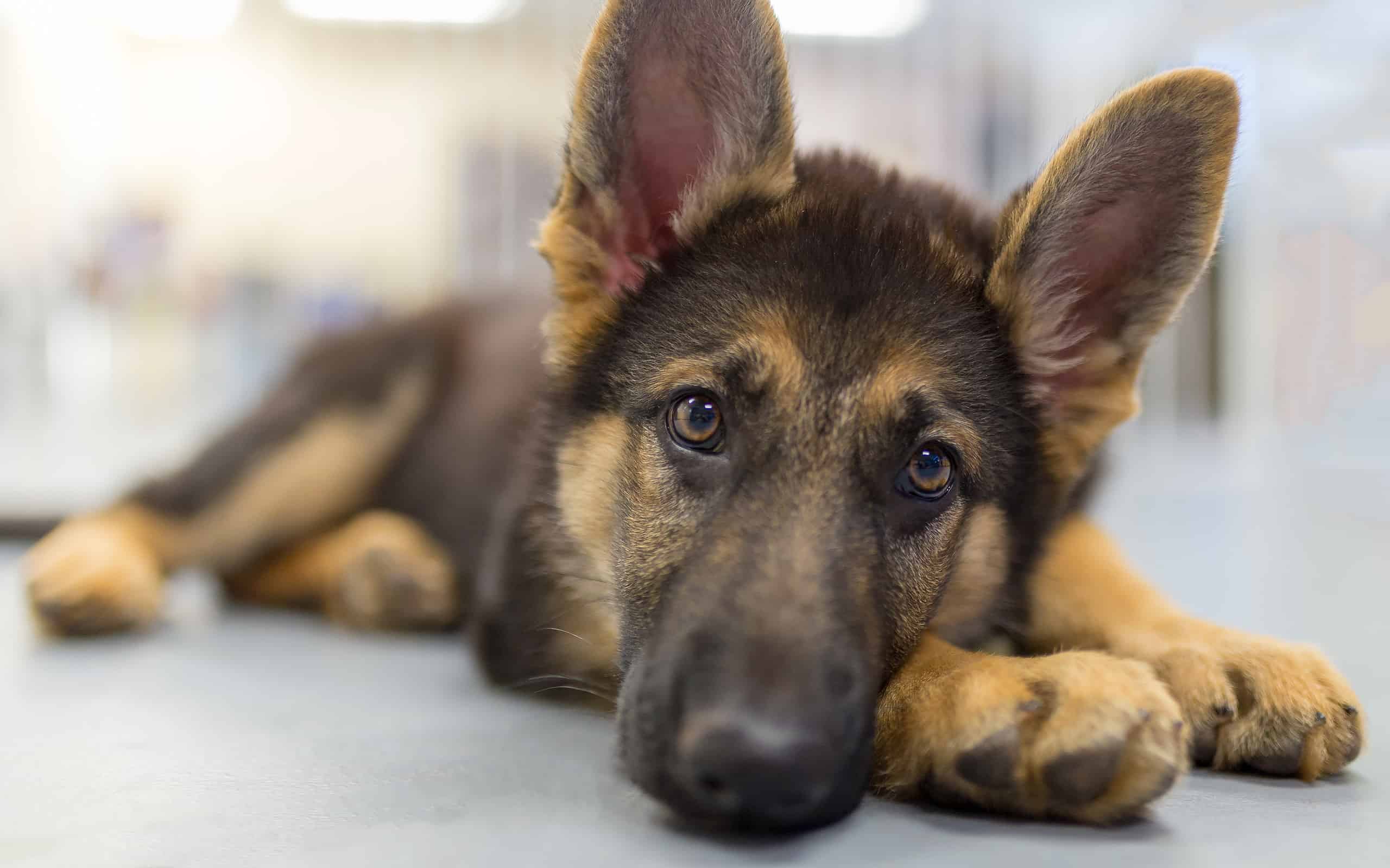Dogs are prone to several different eye conditions. Some are genetic, while others are obtained due to environmental factors. Either way, we can’t always prevent eye conditions in dogs, though we can sometimes take steps to lower the risk.
If you think your dog has an eye condition, you should visit the vet immediately. Eyes are very sensitive and can easily become unusable. Vision is important for your dog to interact with the world, so we should attempt to save the eye whenever possible.
Here are some of the most common eye conditions in dogs to watch out for:
1. Progressive Retinal Atrophy

Sadly, this condition is extremely common despite genetic testing being available.
©Jolanta Beinarovica/Shutterstock.com
Progressive retinal atrophy (PRA) occurs when a dog’s retina deteriorates. It’s a progressive condition, meaning it continues to get worse with time. Currently, there is no cure for it, so most dogs with PRA eventually go blind.
PRA is completely genetic. There isn’t anything you can do to stop it or prevent it from worsening. If your dog has the gene for PRA, they will likely go blind at some point in their life.
There are two types of PRA, though. One occurs very early (around 2 – 3 months of age), while the other doesn’t occur until well into the dog’s adult life. Therefore, when the dog will go blind (and if they’ll live long enough to go blind) isn’t set in stone.
2. Lenticular Sclerosis

Eye exams are important for treating and diagnosing any eye condition.
©Kateryna Kukota/iStock via Getty Images
Lenticular sclerosis is a bluish haze that appears in dogs’ eyes as they age. Usually, it only occurs in senior dogs, though some middle-aged dogs may also develop it. It’s considered a somewhat “normal” change. In most cases, it doesn’t severely affect a dog’s vision.
While it may look similar to the untrained eye, this condition isn’t the same as cataracts. Cataracts are white and do affect a dog’s vision. Lenticular sclerosis isn’t typically as apparent and usually doesn’t cause vision changes.
This condition is extremely common in dogs. About 100% of dogs are expected to develop lenticular sclerosis or cataracts by the time they’re 13.
3. Cataracts

Many older dogs will develop cataracts. Sadly, there isn’t much you can do to prevent them.
©selvaco/Shutterstock.com
Cataracts occur in older humans, and they also occur in older dogs. When a dog has cataracts, it means that the lens inside their eye is cloudy. Having a cloudy lens limits the light that can come into the dog’s eye, causing vision problems. It’s a bit like trying to look through a foggy windshield.
Many different things cause cataracts. The most common form is inherited, meaning the cause is somewhere in your dog’s genetics. However, some conditions (like diabetes) can also cause cataracts. Sometimes, cataracts occur completely randomly.
Some breeds are more prone to cataracts than others.
4. Epiphora

Taking your dog to the vet is vital if you notice any eye issues. Often, early treatment is the most successful.
©135pixels/Shutterstock.com
Epiphora is simply a medical term to describe watery eyes. Dogs can get watery eyes for various reasons, just like people. Sometimes, they may just have something in their eye, which the tears will dislodge. Other times, it may indicate an underlying problem.
If your dog’s eye starts watering and doesn’t stop, it’s likely time to call your vet (especially if you can’t pinpoint a cause with a quick look yourself). Sometimes, watery eyes can be caused by a virus or bacterial infection. Eye injuries, allergies, and eyelash problems can also cause excessive tear production.
To treat this condition, the underlying cause must be determined and treated.
5. Conjunctivitis

Dogs with conjunctivitis often show signs of being in pain, such as squinting or pawing at their eye.
©vkon39/Shutterstock.com
Conjunctivitis is basically an eye infection. Conjunctiva are the membranes that line the eye’s inside and the eyeball’s white part. A dog’s third eyelid is also covered by conjunctiva. In some cases, this tissue can become infected. You can often tell that your dog has conjunctivitis because this membrane will become red and swollen.
This infection can be caused by a range of different things. Viruses and bacterial infections are the most common (and have different treatments). However, allergies, tumors, and other conditions can also cause conjunctivitis.
6. Dry Eyes in Dogs

If you can see your dog’s third eyelid, it’s time to call your vet. Often, this is a sign of an infection.
©Neonci/iStock / Getty Images Plus via Getty Images
Dog eyes must be constantly wettened with tears to lower friction between the eye and the lid. When a dog’s eye is too dry, inflammation and pain occur. While dry eye isn’t a serious problem itself, it can lead to severe issues, such as abrasions on the eye and ulcers.
Some medications and systematic diseases, like distemper, can cause dry eye. It can also occur for seemingly no reason. Sometimes, a dog’s immune system may attack their tear-producing glands, causing them to have dry eyes.
To some extent, dry eyes are a genetic condition. Some dog breeds are simply more likely to develop it, especially the immune-caused variant.
7. Corneal Ulcers

Even puppies may have eye problems, especially those that are genetic.
©Firn/Shutterstock.com
Corneal ulcers are sores on the very front part of a dog’s eyelid. The cornea is the part of the eye that comes into contact with the eyelid. Often, this is caused by erosion and irritation. If something gets stuck in your dog’s eye and doesn’t get out, it can rub a sore into the deeper layers of the cornea.
Trauma can also cause ulcers, such as a cat scratch or your dog rubbing against a tree. Chemical burns can also cause ulcers, such as dogs getting too much shampoo into their eye. (That’s why using a dog shampoo is important.) Some other diseases may also cause ulcers, but this is less common.
Ulcers are very painful, and the dog will often show signs of pain. They may attempt to leave their eye closed and may paw at it. Luckily, these ulcers often go away on their own. However, antibiotics and medication are often given to prevent infection and lower your dog’s pain level.
8. Pannus

German Shepherds get pannus the most, but any breed can be affected.
©josephgruber/iStock via Getty Images
Pannus is an inherited condition that progresses as a pet gets older. Often, German Shepherds, Border Collies, and similar breeds are most prone to this condition.
While younger dogs often have this condition, it usually doesn’t get diagnosed until the dog is older. To begin with, a pink mass will appear in your dog’s cornea. This mass isn’t painful and likely won’t bother your dog.
However, as this disease progresses, the lesion will expand and become darker. It will eventually damage the cornea, causing blindness. Treatment is possible, but it needs to be done before your dog’s cornea is damaged. This damage cannot be undone once it occurs.
9. Uveitis

If your dog’s eye seems to be bothering them for more than an hour, a vet exam may be called for. Most eye conditions are hard to diagnose without diagnostic testing.
©New Africa/Shutterstock.com
Uveitis describes inflammation within the middle part or iris of a dog’s eye (which is called the uvea). Sometimes, both the middle part and the iris are affected. Other times, it may just be one.
Infections and diabetes are the most common conditions that cause uveitis. Therefore, this is really more of a symptom of something bigger than a disease in itself. However, it can be considered a serious complication, as uveitis can cause blindness if left untreated. Sometimes, the underlying cause is never discovered.
To treat this condition, vets will often provide anti-inflammatories and pain medication. If there is any trauma to the eye, they may need to be repaired, as well. Your vet may also prescribe antibiotics to prevent secondary infections from occurring.
The photo featured at the top of this post is © Reshetnikov_art/Shutterstock.com
Ready to discover the top 10 cutest dog breeds in the entire world?
How about the fastest dogs, the largest dogs and those that are -- quite frankly -- just the kindest dogs on the planet? Each day, AZ Animals sends out lists just like this to our thousands of email subscribers. And the best part? It's FREE. Join today by entering your email below.
Thank you for reading! Have some feedback for us? Contact the AZ Animals editorial team.







